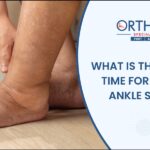Introduction
Dealing with foot problems can be tough, impacting your daily life and overall well-being. Here, we take a closer look at foot issues and check out different ways to improve movement and ease any discomfort.
Identifying Foot Deformities
Before we jump into treatments, it’s important to understand the various types of foot problems. Whether it’s bunions, hammertoes, or flat feet, each condition needs a specific approach for effective solutions. Knowing the exact issue is the initial step toward creating a personalized treatment plan.
Non-Surgical Approaches
Orthotic Devices
Orthotic devices play a pivotal role in non-surgical interventions. These customized insoles provide essential support, redistributing pressure and promoting proper alignment. By addressing the root causes of deformities, orthotic devices offer a non-invasive solution for enhanced comfort and functionality.
Physical Therapy
Engaging in physical therapy is another non-surgical option that can make a big difference in addressing foot problems. Specific exercises aim to strengthen muscles, enhance flexibility, and fix irregular walking patterns. A proficient physical therapist can create a personalized program to target particular deformities, ultimately improving overall foot health.
Surgical Interventions
When non-surgical methods prove insufficient, surgical interventions become a viable option for correcting foot deformities. Let’s explore some common surgical procedures.
Bunionectomy
Bunionectomy is a surgical procedure designed to correct bunions, a prevalent foot deformity characterized by a bony bump at the base of the big toe. During this procedure, the surgeon removes the bony prominence, realigns the joint, and restores normal foot anatomy.
Hammertoe Surgery
For individuals with hammertoes, surgery may be necessary to straighten the affected toes. This involves adjusting the tendons, ligaments, and joints to restore proper alignment and alleviate pain associated with this deformity.
Arthrodesis
In cases where severe deformities impact joint functionality, arthrodesis may be recommended. This surgical procedure involves fusing affected joints, providing stability, and preventing further deformity progression.
Post-Surgery Care
Post-surgery care is integral to a successful recovery. Patients should follow prescribed rehabilitation exercises, adhere to weight-bearing restrictions, and attend follow-up appointments to monitor progress. Compliance with post-surgery care guidelines ensures optimal healing and long-term positive outcomes.
The Role of Lifestyle Modifications
Beyond medical interventions, adopting certain lifestyle modifications can contribute to the management of foot deformities.
Footwear Choices
Choosing appropriate footwear is paramount in alleviating discomfort associated with foot deformities. Supportive shoes with ample toe room and cushioning can enhance stability and minimize pressure on affected areas.
Weight Management
Maintaining a healthy weight is crucial, as excess weight places additional stress on the feet and exacerbates deformities. A balanced diet and regular exercise contribute to overall well-being and can positively impact foot health.
Conclusion
for personalized care and expert guidance on treating foot deformity, consider consulting with Dr. Chetan Oswal, a renowned foot and ankle surgeon in Pune. His expertise ensures a comprehensive approach to addressing your specific needs, promoting comfort, and restoring mobility.





